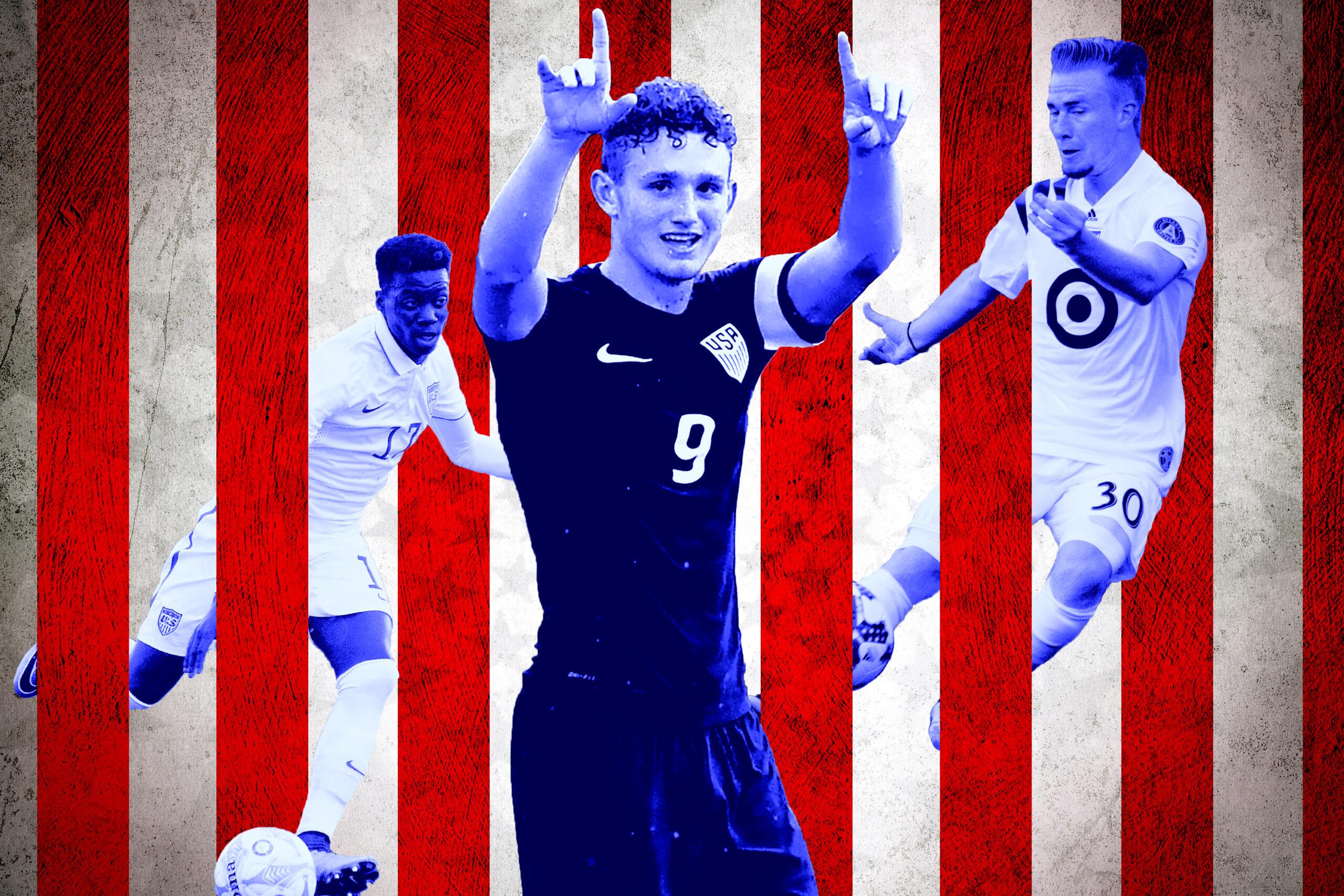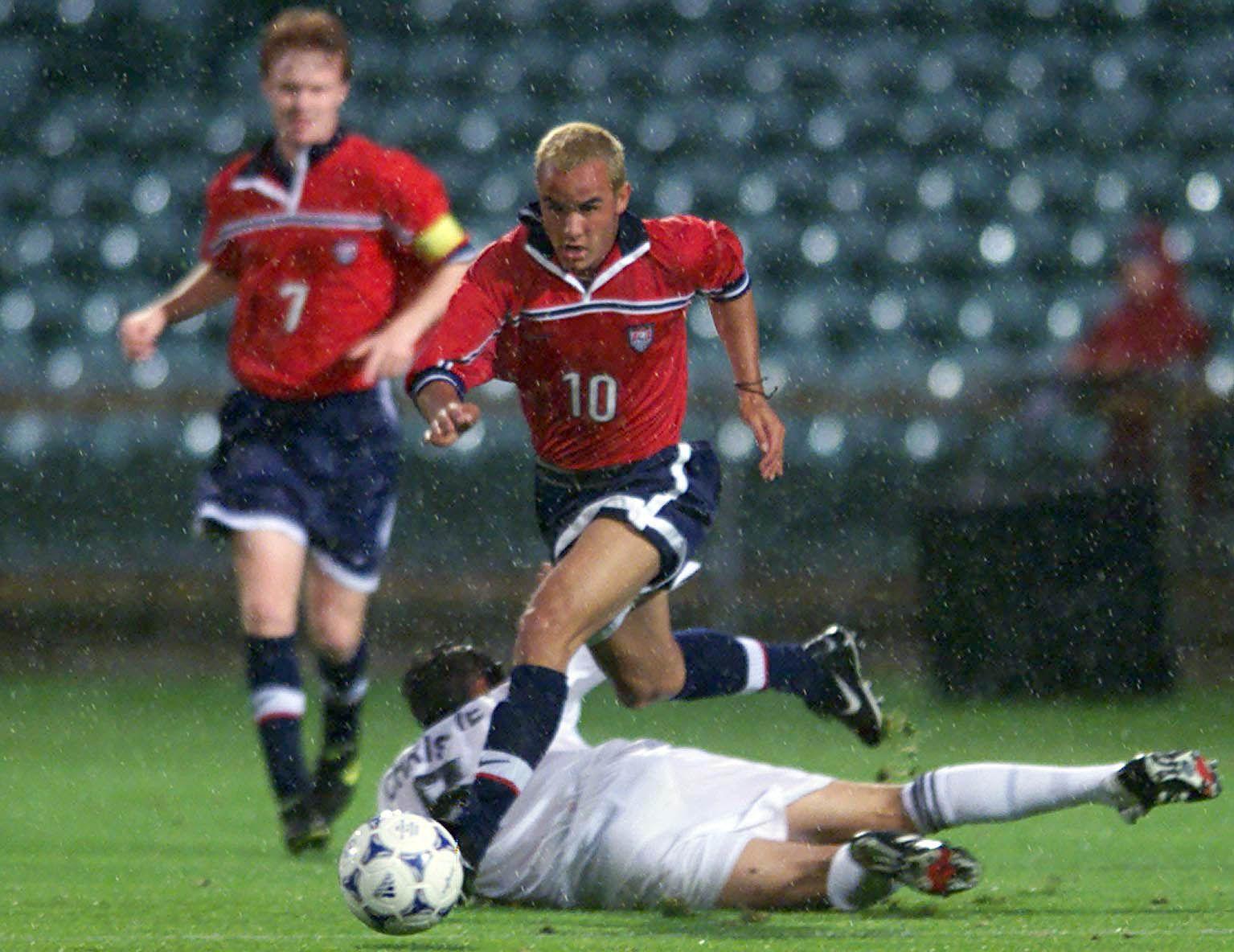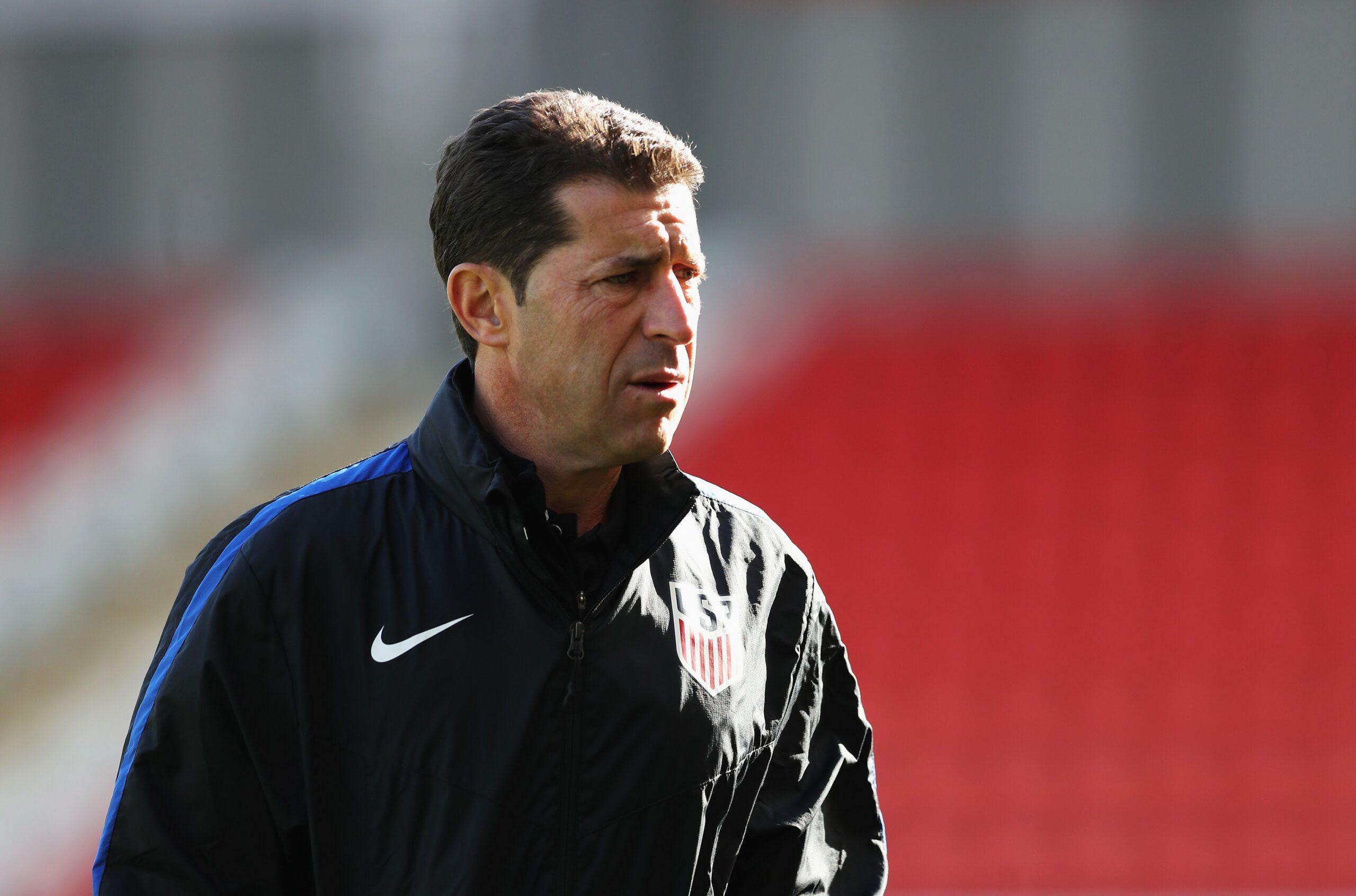
While the United States men’s national team flails about in its World Cup qualifying campaign, needing results against Panama (Friday) and Trinidad & Tobago (next Tuesday) to reach Russia 2018, another American squad kicks off its World Cup effort this week. The Stars and Stripes travel to India to play in the Under-17 World Cup, and they might bring home the trophy. If you’re seeking the bright future of American soccer and what comes next, it’s not on a field in Orlando. It’s at Jawaharlal Nehru Stadium in New Delhi.
The U-17 World Cup is a strange tournament. It features the best 16- and 17-year-old soccer players in the world, chosen based on both past performance and future potential. Previous Golden Ball winners include stars like Chelsea’s Cesc Fàbregas and Real Madrid’s Toni Kroos, as well as Florent Sinama Pongolle, the Frenchman who’s currently at his 13th club, Chainat Hornbill Football Club in Thailand's second division. Nigeria, a country known for having its teenage talent plundered by European clubs, is the most successful nation on the U-17 level. They’ve won five times, two more than Brazil. Meanwhile, international soccer powerhouse Italy has never finished better than fourth. That matches the best finish by not-exactly-international-soccer-powerhouses Bahrain, Qatar, and, yes, the United States.
Results aren’t the point—not exactly, anyway. The U-17 World Cup is about the future, about seeing and being seen. Every major club—and many minor ones, too—will have scouts at the games, hoping to find talent to fill their ranks. And the American team, paired in a group with India, Ghana (always freaking Ghana), and Colombia, will draw a fair number of those talent-seeking men. “The U-17 team, it’s not a secret that it’s one of the best American teams ever,” says Sebastian Dremmler, Bayern Munich’s head coach of international programs who oversees the German giant’s efforts in the U.S. “Of course, all European teams are looking with two eyes on the U.S. team to see what happens.”
The red, white, and blue might go out in the group stage or they might win the damn thing. (Head coach John Hackworth, heading to his fourth U-17 World Cup as either the head coach or an assistant, says anything less than a quarterfinal appearance would be a disappointment.) Regardless of where the Americans end up, the quality and depth of this U.S. team—Hackworth and his staff brought in more than 100 kids for training sessions during this two-year cycle, significantly more than in the past—is nearly unprecedented. The efforts put into youth development over the last decade are finally starting to produce results on a mass scale. This American squad is arguably closer to the best teams in the tournament in terms of raw talent than ever before —and it might be worse than every American team that comes after it.
The 21-man roster Hackworth has chosen to play in India features mostly teenagers playing in the U.S. as well as a handful on clubs abroad. Eighteen played for clubs in the U.S. Soccer Development Academy, an initiative launched by the U.S. Soccer Federation in 2007 to formalize training sessions and curricula at elite youth soccer programs across the country. Six have already signed homegrown professional contracts with their respective Major League Soccer teams. Atlanta United’s Andrew Carleton, who’s never seen a defender he won’t try to take one-on-one, could become MLS’s first true homegrown star. Josh Sargent, the team’s most exciting prospect and winner of the Silver Boot at the U-20 World Cup earlier this year, developed with the Scott Gallagher Soccer Club in St. Louis and will join the Bundesliga’s Werder Bremen in January. (Dremmler says Bayern had their eye on Sargent, too.) Tim Weah, son of former FIFA World Player of the Year George Weah, is working his way through the Paris Saint-Germain system and recently signed his first professional contract with the club. He and Carleton featured on The Guardian’s list of the 60 best players in the world born in 2000, the first time two Americans made the cut.

The U.S. team has lost just two games in the last year and posted wins over 10 squads contesting the World Cup. Even without FC Golden State standout defender AJ Vasquez, who injured himself in the last pre-tournament camp, matching or bettering the U.S.’s all-time best finish —fourth place at the 1999 tournament, led by Golden Ball winner Landon Donovan (remember him?), DaMarcus Beasley, Kyle Beckerman, and Oguchi Onyewu—should be a goal. That would be a nice change. The Americans haven’t reached the quarterfinals in more than a decade and haven’t won a knockout round game since 1999. Put another way, every single player on the 2017 squad was born after the Americans last prevailed in an elimination game at the U-17 World Cup.
But the point of youth soccer programs isn’t to win championships. It’s to develop players. Past U.S. U-17 teams have been lacking there, too. The most successful player from the 2001 squad was Eddie Johnson, a forward who scored 19 goals in 63 senior team caps. In 2003 it was Jonathan Spector, a right back who made the 2010 World Cup roster but didn’t appear in any matches. (Freddy Adu also played on that team.) Jozy Altidore, the senior team’s third all-time leading goal scorer, and sometimes-starting center back Omar Gonzalez emerged from the 2005 group, the best of recent years, along with eventual Serbia and Borussia Dortmund standout Neven Subotic. Brek Shea, an infrequently brilliant player best known for his painting, and Atlanta United fullback Greg Garza highlighted the 2007 team, although the award for most successful professional career from that group might go to Josh Lambo, who spent two seasons as the San Diego Chargers’ starting placekicker. Juan Agudelo, perpetually on the cusp of greatness but never quite there, highlighted the 2009 class, with center-midfielder-in-waiting and free-kick-wunderkind Kellyn Acosta and dynamic winger Paul Arriola suiting up in 2011. The team missed the tournament in 2013, the only time they’ve done so in 16 attempts, then Christian Pulisic, Fulham’s Luca de la Torre, and New York Red Bulls star Tyler Adams went winless in the 2015 event in Chile. Fourteen years and eight tournaments produced two sure-thing senior-team starters, and even Altidore’s starting spot is hardly guaranteed anymore due to the emergence of players like Bobby Wood.
Is one of the players on the 2017 roster going to replicate Pulisic’s feat and vault from the youth ranks to being the best player on the senior side all before his 20th birthday? Almost certainly not. But it seems like a number of these teenagers could play a role on the full national team in the near future, which hasn’t been the case in the past. And there are at least few dozen other unselected players who made a serious case that they belong on this U-17 roster as well—another positive sign in a sport where players develop at different speeds. Because in some ways, what really matters in such a young age group is the sheer number of players with similar ability. It’s impossible to predict exactly how a single individual will develop, so the best way to ensure a bright future is to have as many talented teens as possible.
“I think it’s a really positive sign that there has been the level of talent that we’re currently seeing coming through the ranks. I say the word ‘depth’ a lot. There’s so much different maturation and growth that’s going to occur. We have a big pool,” Hackworth says. “Guys who are heart-wrenchingly close to being on this roster are going to go back and be motivated to prove they should be on this roster.”
Tony Annan, the academy director at Atlanta United, sees this depth firsthand. The club, which won the U-15/16 national championship in its first year of existence thanks to two goals from Carleton, also placed Justin Garces and Chris Goslin on the U.S. roster, while Zyen Jones, George Bello, and Charlie Asensio also earned looks from Hackworth.
Additionally, three United players made the Jamaica roster and two will figure for Honduras. The Development Academy helps take the positive youth development steps already made in America—the U.S. Soccer Federation recently announced the end of the U-17 residency program because it was no longer needed—and improve upon them by offering an obvious path to the professional ranks. At MLS academies, a standout youth player can train with the first team and, eventually, sign a contract there. The increasingly standardized environment of other academies in the program means that coaches at pro clubs across the country know more about the training players receive and the skills they develop.
When Annan started Atlanta’s academy, he recruited players from other clubs in the Atlanta region. He was impressed by their ability and the coaching they had already received. “These kids were already on a really good pathway when we got them. We just accelerated that pathway to another level and helped them be more professional with the way they trained,” he says. “We’ve gotten better at getting the kids in a better place early in their career. We’ve gotten better at the organization, the coaching, and the information that’s being given.”

Tab Ramos, the former USMNT standout who’s been the U.S. U-20 coach since 2011 and the program’s youth technical director since 2013, agrees. “When I first started I think one of the issues in 2011 was not so much maybe that all the talent wasn't there, it was the fact that at U.S. Soccer we weren't organized enough to have all the talent in one place and to know the talent,” he said during a recent interview. In 2017, however, there are 149 development academies across the country, producing talent, providing competitive atmospheres, routing the best players to professional situations—whether that’s an affiliated MLS club or another program—and moving them up the soccer pyramid.
The system isn’t perfect and there’s no guarantee that the 2019 or 2021 U-17 World Cup team will be as good as the one going to India. Everyone I spoke with for this story thought the 2017 team represented a particularly deep talent pool. But they also agreed that the formalization of the development process is a major reason for that depth. The next Pulisic will come through the ranks in a much shorter amount of time than the 16 years between Donovan and the Borussia Dortmund protégé. He might even be with the U-15s right now. Plus, the American program should start producing more full national team starters on a regular basis. The math, increasingly, is on America’s side.
The U-17 World Cup is a showcase, a place to see what’s coming and a tournament where a kid can show that he’s ready for a bigger spotlight. Seth Trembly, currently an assistant coach with the Utah Valley University women’s team, played alongside Donovan at the 1999 tournament. He saw his teammate succeed against the best of his age group, then become a key part of the 2002 World Cup team only a couple of years later. “When Landon got called up to the first team, it was like, ‘Whoa, no one’s ever done this. Is it going to work?’ And then he goes on and scores against Mexico [at the 2002 World Cup], and you realize that while no one in the U.S. has done this, they’ve done it over and over again in Europe, South America, and Africa, in countries that are having success on the international stage,” he said.
“Look at Europe and South America. The guys who are 20 or 21 have been the man in their country for three years. They are starting to become veteran pros who have experience in World Cups. That’s where the U.S. is getting to. Look at Christian Pulisic. He’s going to be a veteran on the international scene at 20 or 21. That’s what will really help us put ourselves in position to go on a run and hopefully win a World Cup at the senior level.”
If Pulisic does manage to lead the Americans to their first World Cup, he’ll likely be flanked by players from this class of U-17s.